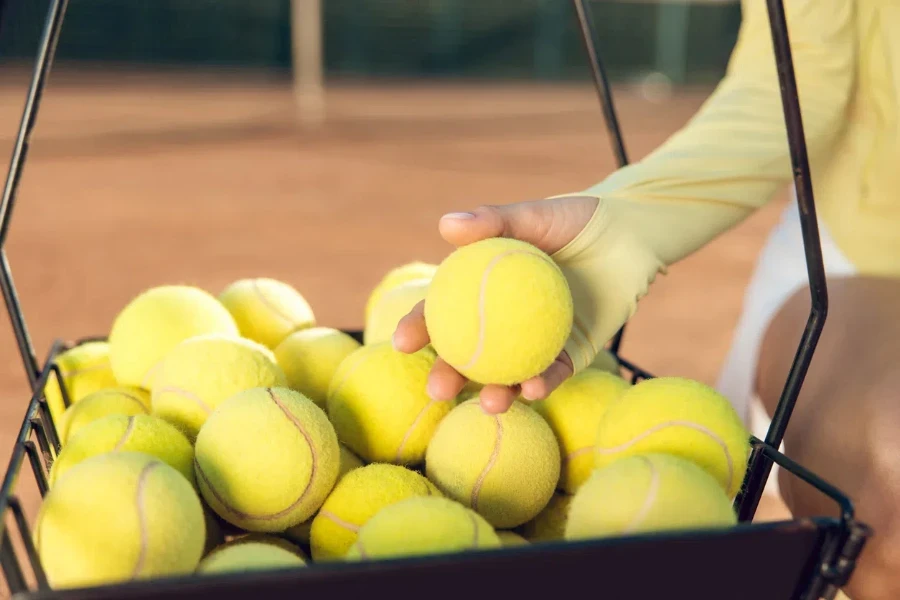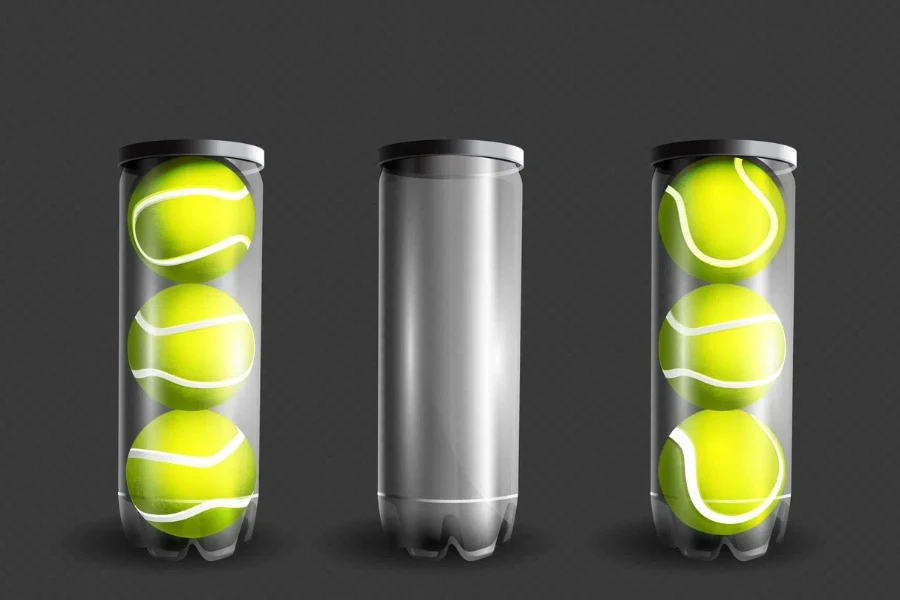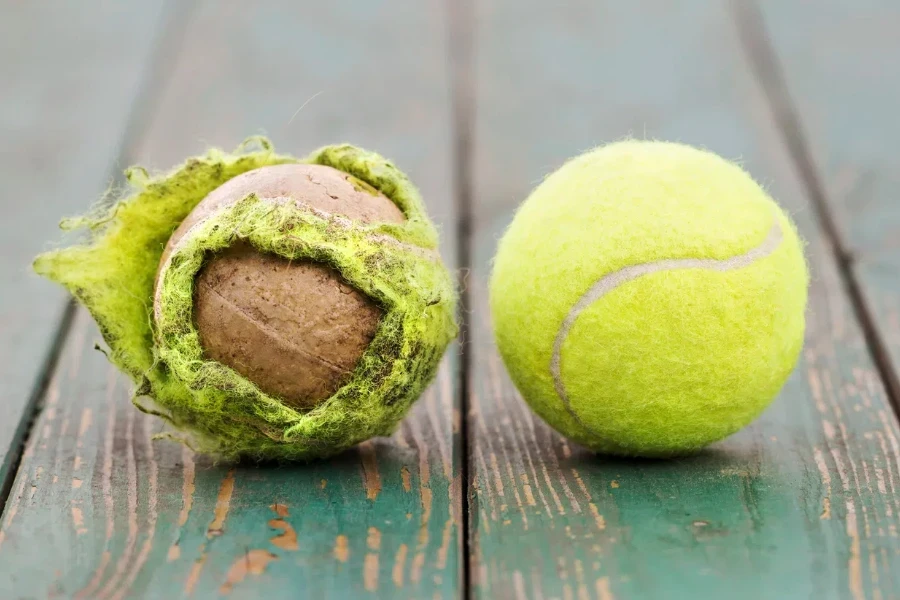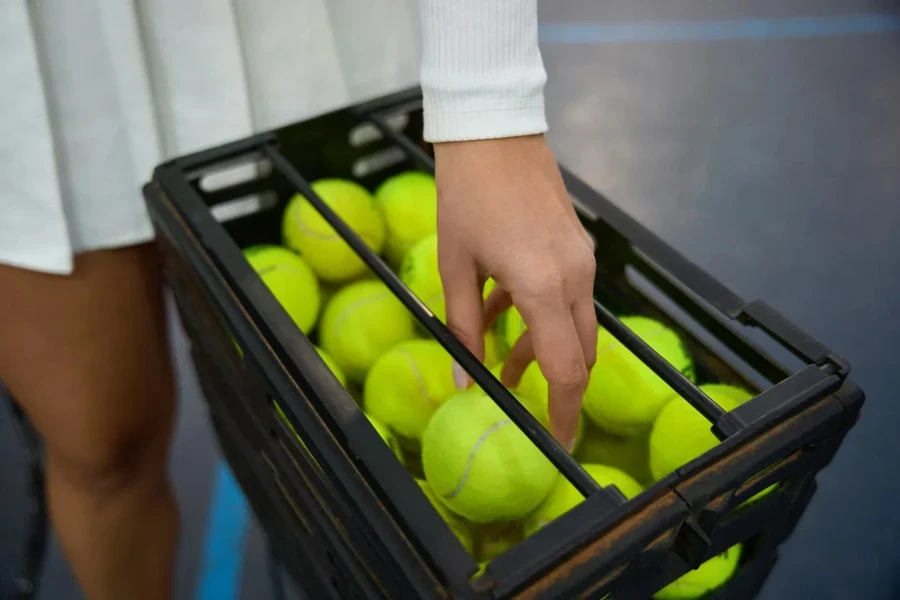The tennis ball market is experiencing significant growth, driven by increasing participation in tennis worldwide and the rising popularity of the sport. This article delves into the global demand for tennis balls, key players and manufacturers, and emerging markets and growth opportunities.
Table of Contents:
Market Overview
Innovative Materials and Design Trends
Technological Features Enhancing Performance
Seasonality and Cultural Influence
Market Overview

Global Demand for Tennis Balls
The global demand for tennis balls has been on a steady rise, fueled by the sport’s growing popularity across various regions. According to a report by Research and Markets, the global tennis shoes market, which closely correlates with the tennis ball market, reached US$2.4 billion in 2023 and is expected to grow at a CAGR of 2.88% from 2023 to 2032. This growth is indicative of the increasing number of tennis players and enthusiasts worldwide.
In the United States, tennis participation has surged, with the U.S. Tennis Association reporting a 22% increase in tennis participation since 2020. This trend is mirrored in other regions, such as Europe and Asia, where tennis is gaining traction among both amateur and professional players. The rising number of tennis tournaments and the inclusion of tennis in school curriculums are also contributing to the heightened demand for tennis balls.
Key Players and Manufacturers
The tennis ball market is dominated by several key players who have established themselves as leaders through innovation and quality. Companies such as Wilson Sporting Goods, Penn, Dunlop, and Babolat are at the forefront of the market, consistently introducing new products to meet the evolving needs of players.
Wilson Sporting Goods, for instance, is renowned for its high-quality tennis balls used in major tournaments like the US Open and the Australian Open. Penn, another leading brand, is known for its durable and consistent tennis balls, making it a favorite among recreational and professional players alike. Dunlop and Babolat also hold significant market shares, with their products being widely used in various tennis events globally.
These manufacturers are investing heavily in research and development to enhance the performance and durability of tennis balls. Innovations such as improved rubber compounds and advanced manufacturing techniques are helping these companies maintain their competitive edge in the market.
Emerging Markets and Growth Opportunities
Emerging markets present significant growth opportunities for the tennis ball industry. Countries in Asia, particularly China and India, are witnessing a surge in tennis participation. According to Statista, China is projected to generate the highest revenue in the racket sports equipment market, with US$4,374.0 million in 2024. This growth is driven by increasing disposable incomes, government initiatives to promote sports, and the rising popularity of tennis among the youth.
In India, the tennis ball market is also expanding rapidly. The country’s growing middle class and increasing interest in tennis as a recreational activity are driving demand. Additionally, the success of Indian tennis players on the international stage is inspiring more people to take up the sport.
Africa and Latin America are other regions with untapped potential. The growing interest in tennis, coupled with efforts to improve sports infrastructure, is expected to boost the demand for tennis balls in these regions. Manufacturers are exploring these markets by establishing local production facilities and forming strategic partnerships with regional distributors.
Innovative Materials and Design Trends

Eco-Friendly and Sustainable Materials
The sports industry, including tennis ball manufacturing, is increasingly focusing on eco-friendly and sustainable materials. This shift is driven by growing consumer awareness and demand for environmentally responsible products. Traditional tennis balls are made from rubber and felt, which are not biodegradable and contribute to environmental pollution. In response, manufacturers are exploring alternative materials such as natural rubber, recycled rubber, and organic cotton for the felt covering. These materials not only reduce the environmental impact but also maintain the performance standards required for professional play. According to the Outdoor and Sports in World Datagraphics report, there is a noticeable trend towards sustainability in the sports industry, with companies like Decathlon leading the way in incorporating eco-friendly practices into their product lines.
Advanced Manufacturing Techniques
Advancements in manufacturing techniques are revolutionizing the production of tennis balls. Modern methods such as 3D printing and automated assembly lines are being adopted to enhance precision and efficiency. These techniques allow for the creation of tennis balls with consistent quality and performance characteristics. For instance, 3D printing enables the production of tennis balls with precise weight distribution and uniform bounce, which are crucial for competitive play. Additionally, automated assembly lines reduce human error and increase production speed, ensuring a steady supply of high-quality tennis balls to meet the growing demand.
Customization and Personalization Options
Customization and personalization have become significant trends in the sports industry, and tennis balls are no exception. Players and enthusiasts can now order tennis balls with personalized logos, colors, and even specific performance characteristics tailored to their playing style. This trend is particularly popular among amateur players and clubs looking to create a unique identity. Customization options are made possible through advanced printing technologies and flexible manufacturing processes. According to the Beyond the Game: The Transformation of Women’s Sportswear report, the ability to offer personalized products is a key factor in attracting and retaining customers in the sports industry.
Technological Features Enhancing Performance

Improved Durability and Longevity
One of the primary concerns for tennis players is the durability and longevity of tennis balls. Technological advancements have led to the development of tennis balls that can withstand prolonged use without significant wear and tear. Innovations such as reinforced rubber cores and high-quality felt coverings have significantly extended the lifespan of tennis balls. These improvements not only provide better value for money but also reduce the frequency of ball replacements, contributing to environmental sustainability. The Outdoor and Sports in World Datagraphics report highlights the importance of durability in sports equipment, with consumers increasingly seeking products that offer long-term performance.
Enhanced Bounce and Consistency
The bounce and consistency of tennis balls are critical factors that affect the quality of play. Technological advancements have enabled manufacturers to produce tennis balls with superior bounce characteristics and consistent performance. Innovations such as pressureless tennis balls, which maintain their bounce over time, and advanced rubber formulations that provide uniform elasticity, have greatly improved the playing experience. These enhancements are particularly beneficial for professional players who require precise and predictable ball behavior during matches. According to the Sportswear in the US report, the emphasis on high-performance features is a growing trend in the sports industry, driven by the demands of competitive athletes.
Weather Resistance and Adaptability
Weather conditions can significantly impact the performance of tennis balls. To address this challenge, manufacturers are developing tennis balls with enhanced weather resistance and adaptability. These balls are designed to perform consistently in various environmental conditions, including extreme heat, cold, and humidity. Advanced materials and coatings are used to protect the balls from moisture and UV damage, ensuring optimal performance regardless of the weather. The Outdoor and Sports in World Datagraphics report indicates that weather-resistant sports equipment is becoming increasingly popular, as players seek reliable performance in all conditions.
Seasonality and Cultural Influence

Popularity During Major Tournaments
The popularity of tennis balls often peaks during major tournaments such as Wimbledon, the US Open, and the French Open. These events not only attract millions of viewers worldwide but also drive sales of tennis-related products, including tennis balls. The increased visibility and media coverage during these tournaments create a surge in demand as both amateur and professional players seek to emulate their favorite athletes. According to the Beyond the Game: The Transformation of Women’s Sportswear report, major sporting events play a crucial role in influencing consumer behavior and driving sales in the sports industry.
Regional Preferences and Trends
Regional preferences and trends also play a significant role in the tennis ball market. Different regions have varying preferences for tennis ball brands, types, and specifications. For example, players in Europe may prefer tennis balls with a specific felt texture suitable for clay courts, while players in North America might favor balls designed for hard courts. Understanding these regional preferences is essential for manufacturers to tailor their products and marketing strategies accordingly. The Outdoor and Sports in World Datagraphics report provides insights into the regional variations in sports equipment preferences, highlighting the importance of localized marketing efforts.
Impact of Celebrity Endorsements
Celebrity endorsements have a profound impact on the popularity and sales of tennis balls. High-profile athletes such as Roger Federer, Serena Williams, and Rafael Nadal often endorse specific brands, influencing consumer preferences and purchasing decisions. These endorsements not only boost brand visibility but also lend credibility and prestige to the products. According to the Beyond the Game: The Transformation of Women’s Sportswear report, celebrity endorsements are a powerful marketing tool in the sports industry, driving brand loyalty and increasing sales.
Conclusion
The tennis ball industry is undergoing significant transformations driven by innovative materials, advanced manufacturing techniques, and technological enhancements. The focus on sustainability, customization, and performance is reshaping the market, catering to the evolving needs of players and consumers. As the popularity of tennis continues to grow, particularly during major tournaments, the demand for high-quality, durable, and weather-resistant tennis balls is expected to rise. The influence of regional preferences and celebrity endorsements further underscores the dynamic nature of the market.




